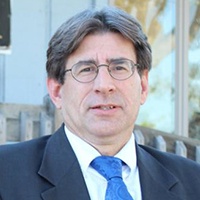Shaftsburg White Collar Crime Lawyer, Michigan
Sponsored Law Firm
-
 x
x

Click For More Info:
-
Hannawa Law PC
2909 E Big Beaver Rd Troy, MI 48083» view mapCriminal Defense Law Full-service legal experts on your side.
Whatever the specific details of your situation may be, our attorneys are ready to fight for you and guide you through every step of the process.
248-466-0770
Not enough matches for Shaftsburg White Collar Crime lawyer.
Below are all Shaftsburg Criminal lawyers.
Donald J. Baranski
✓ VERIFIEDDivorce & Family Law, Estate, Employment, Criminal, Consumer Bankruptcy
Thirty years in general practice
Donald J. Baranski received his Bachelor of Arts in Humanities Pre Law, from Michigan State University. This was a triple major of American History, P... (more)
Kit Sheintoch
Real Estate, Litigation, Divorce & Family Law, Criminal, Slip & Fall Accident
Status: In Good Standing
Jeffrey J. Butler
Election & Political, Natural Resources, Employee Rights, Banking & Finance, White Collar Crime
Status: In Good Standing Licensed: 33 Years
Robert L. Baldori
Divorce & Family Law, White Collar Crime, Criminal
Status: In Good Standing Licensed: 37 Years
Adam Joel Bennett
Litigation, Family Law, Criminal, Collection
Status: In Good Standing Licensed: 20 Years
Alexander Stephen Rusek
Civil Rights, Administrative Law, Federal Appellate Practice, Criminal, Business
Status: In Good Standing
Angela N. Tripi
Dispute Resolution, Criminal, Gay & Lesbian Rights
Status: In Good Standing Licensed: 9 Years
Anita B. Folino
Landlord-Tenant, Lawsuit, Employee Rights, DUI-DWI
Status: In Good Standing Licensed: 45 Years
Anne-Marie H. Voice
Native People, Civil & Human Rights, Criminal
Status: In Good Standing Licensed: 42 Years
 Nickolas Hannawa Troy, MI
Nickolas Hannawa Troy, MI AboutHannawa Law PC
AboutHannawa Law PC

